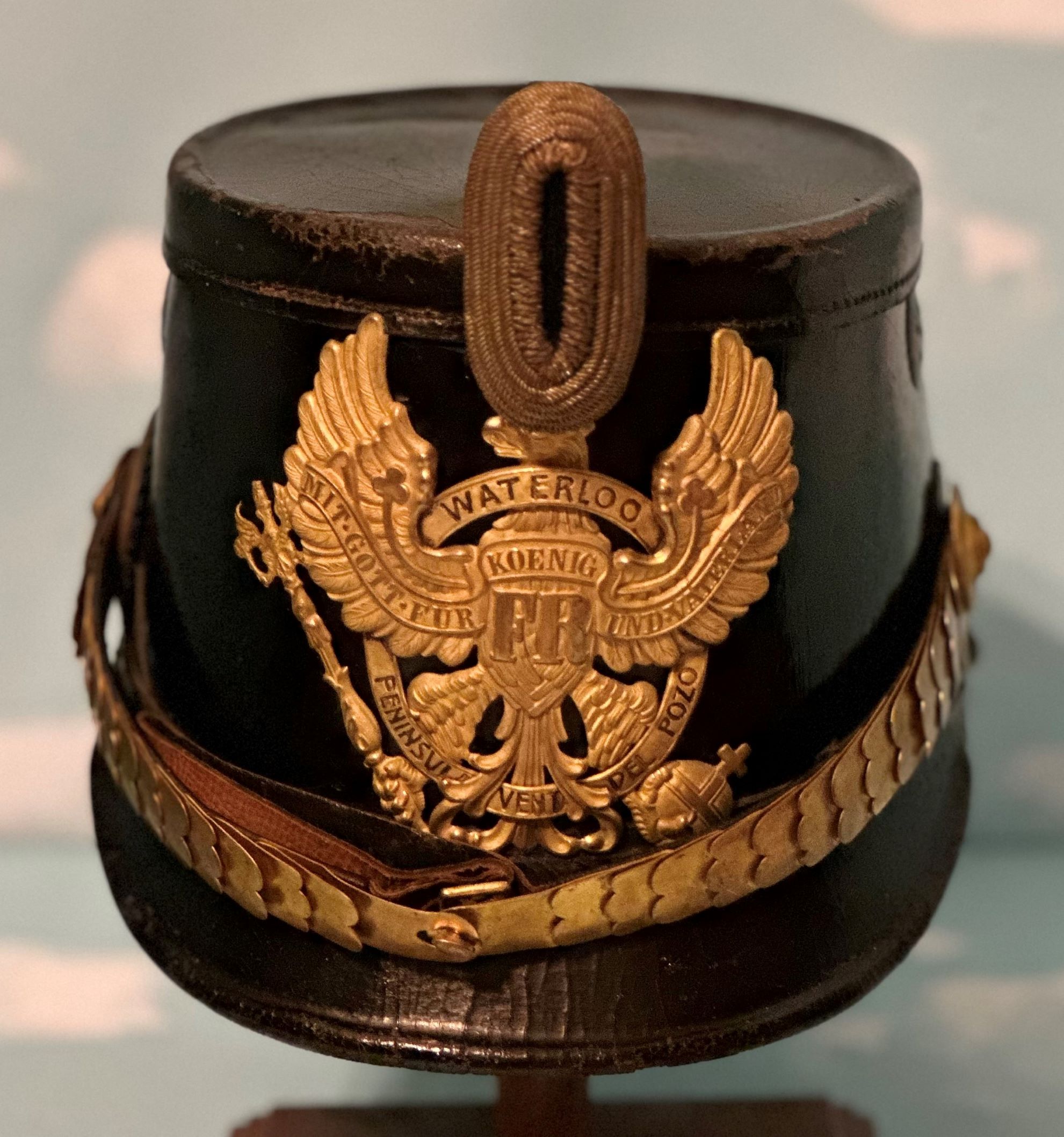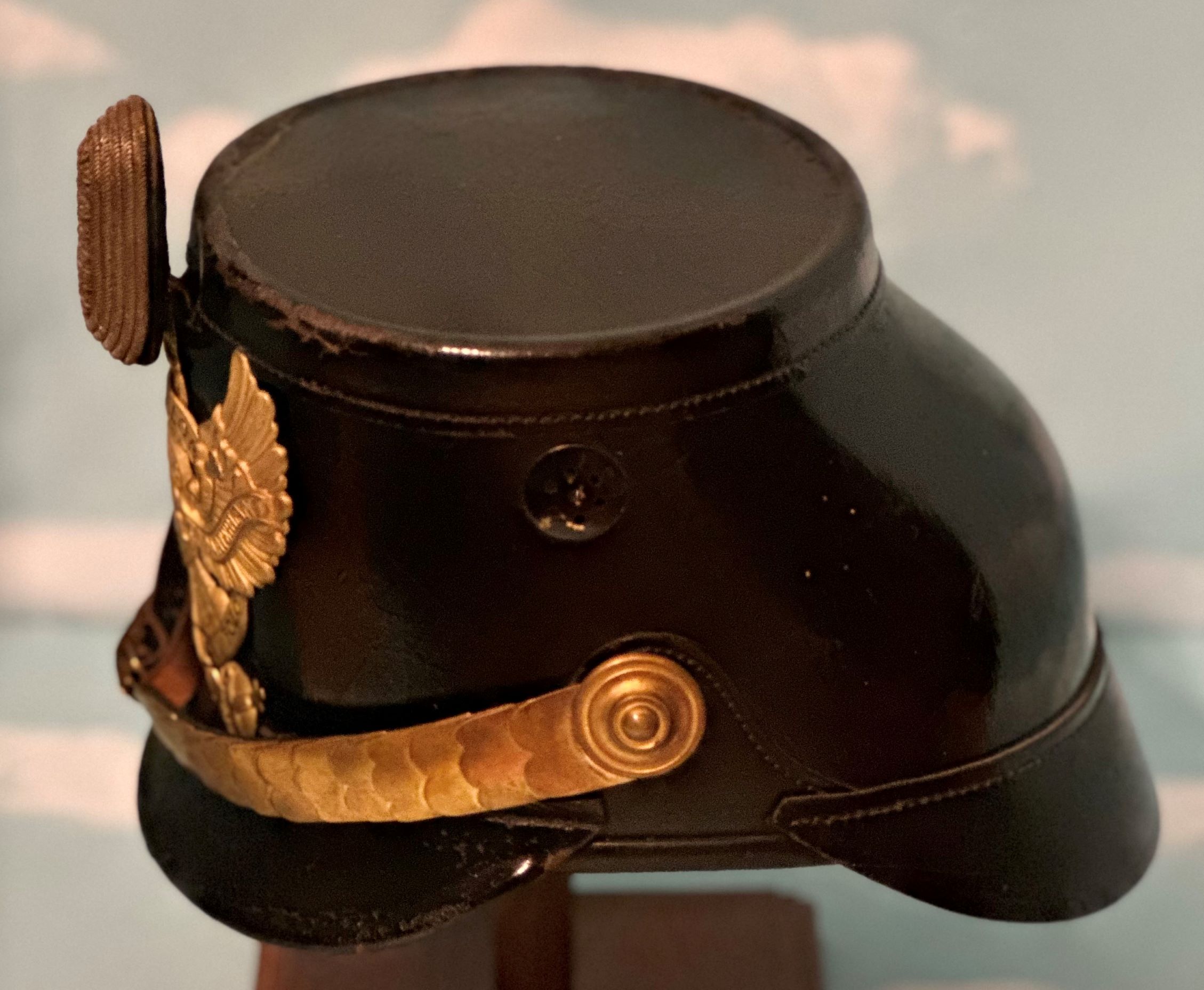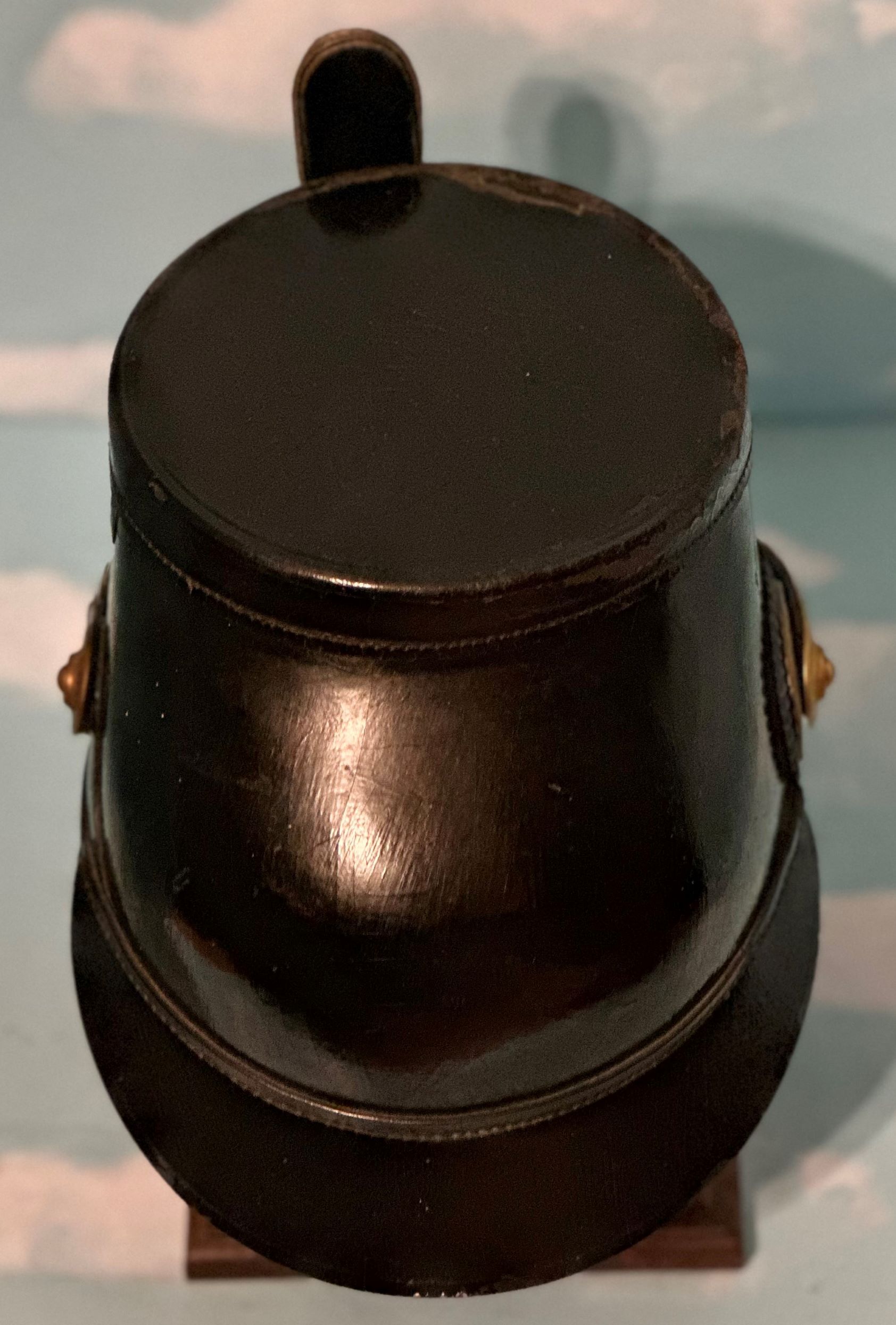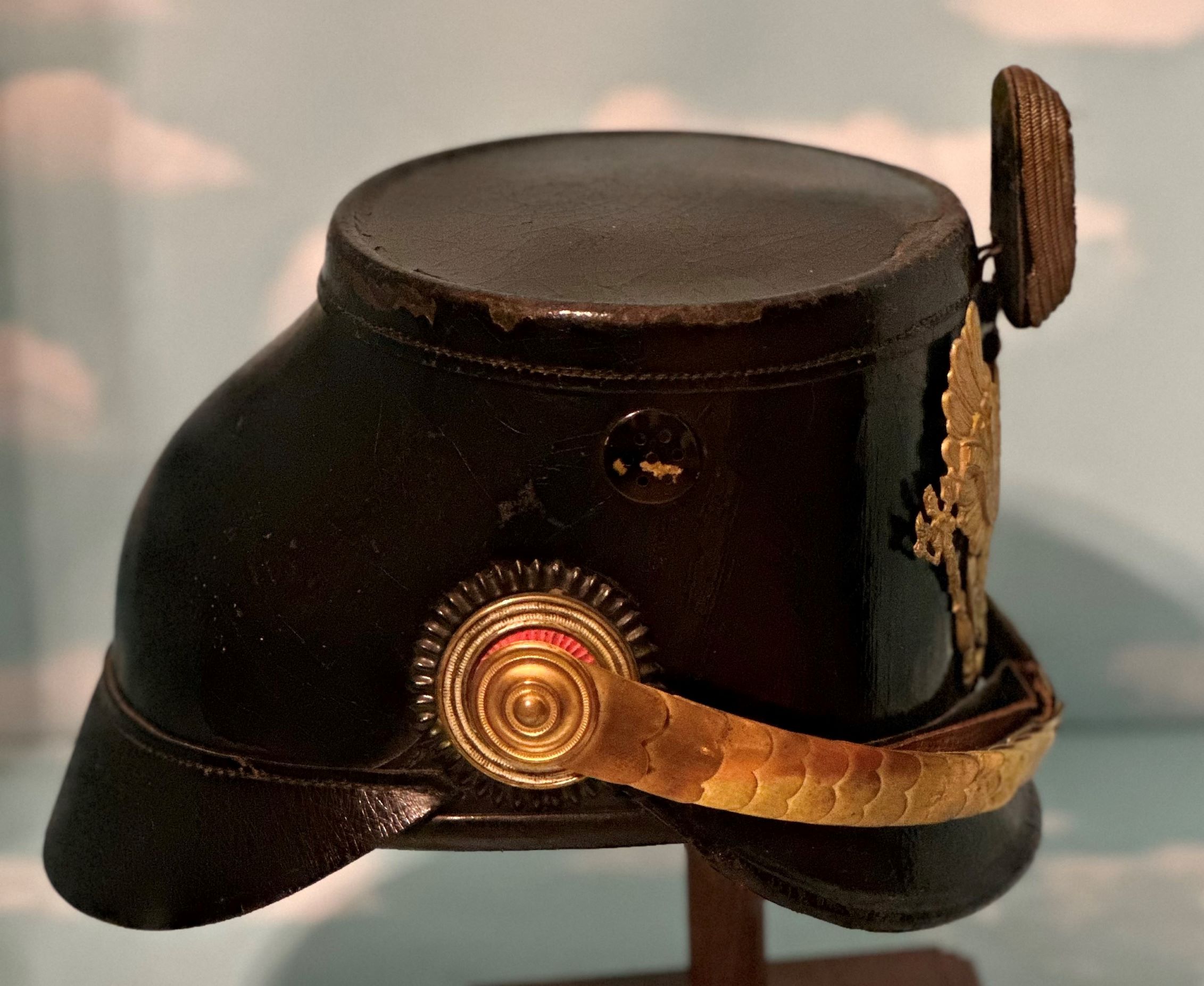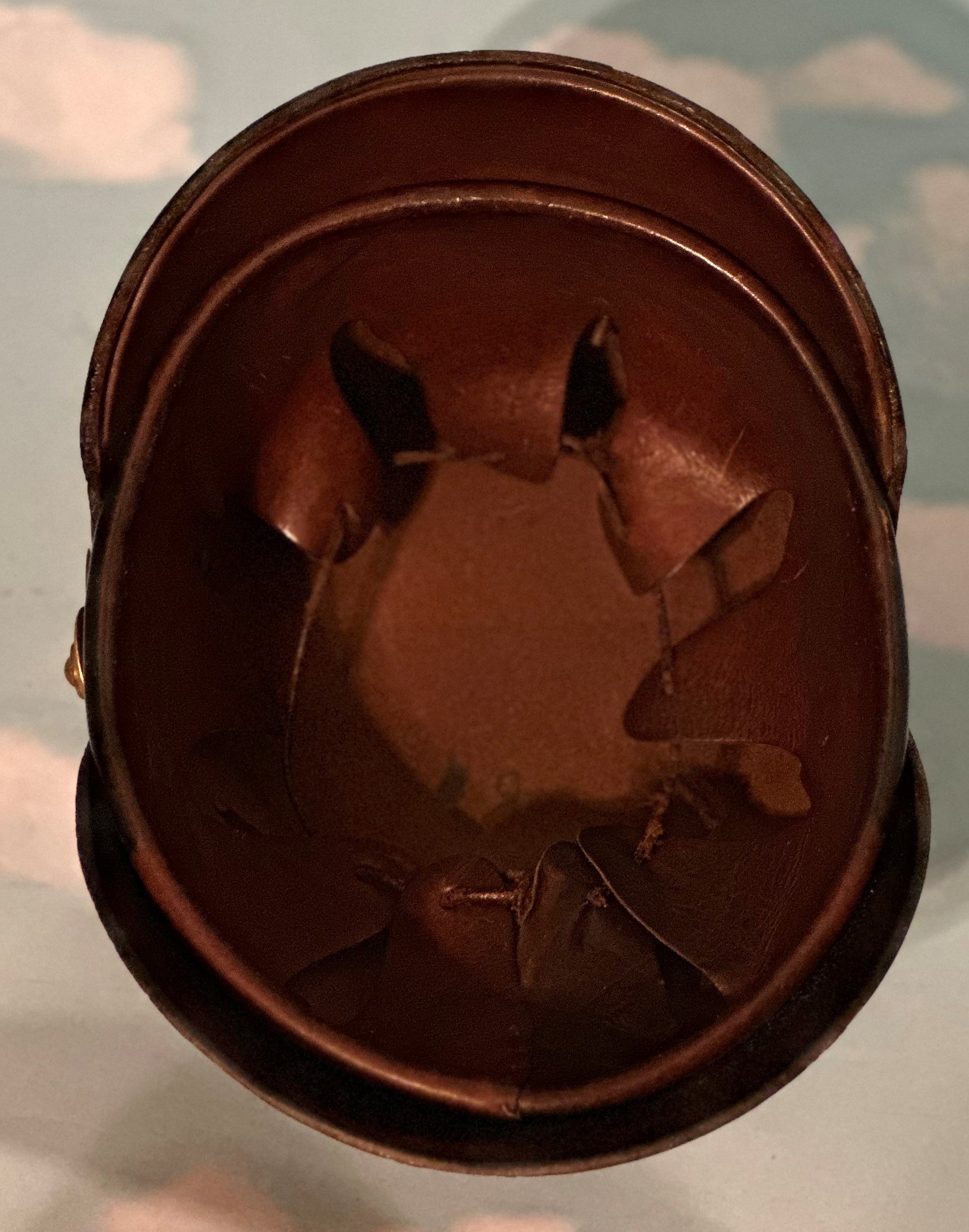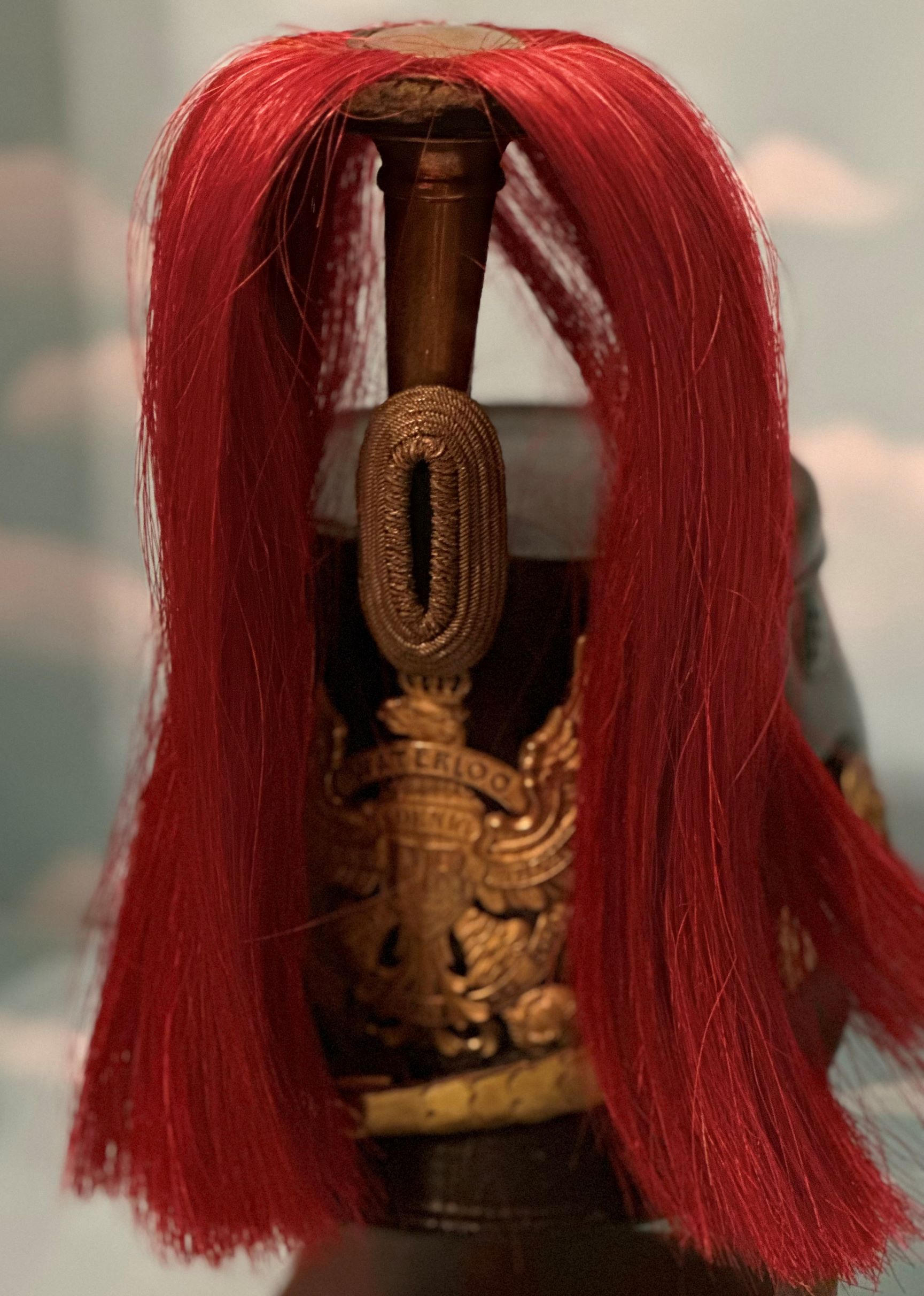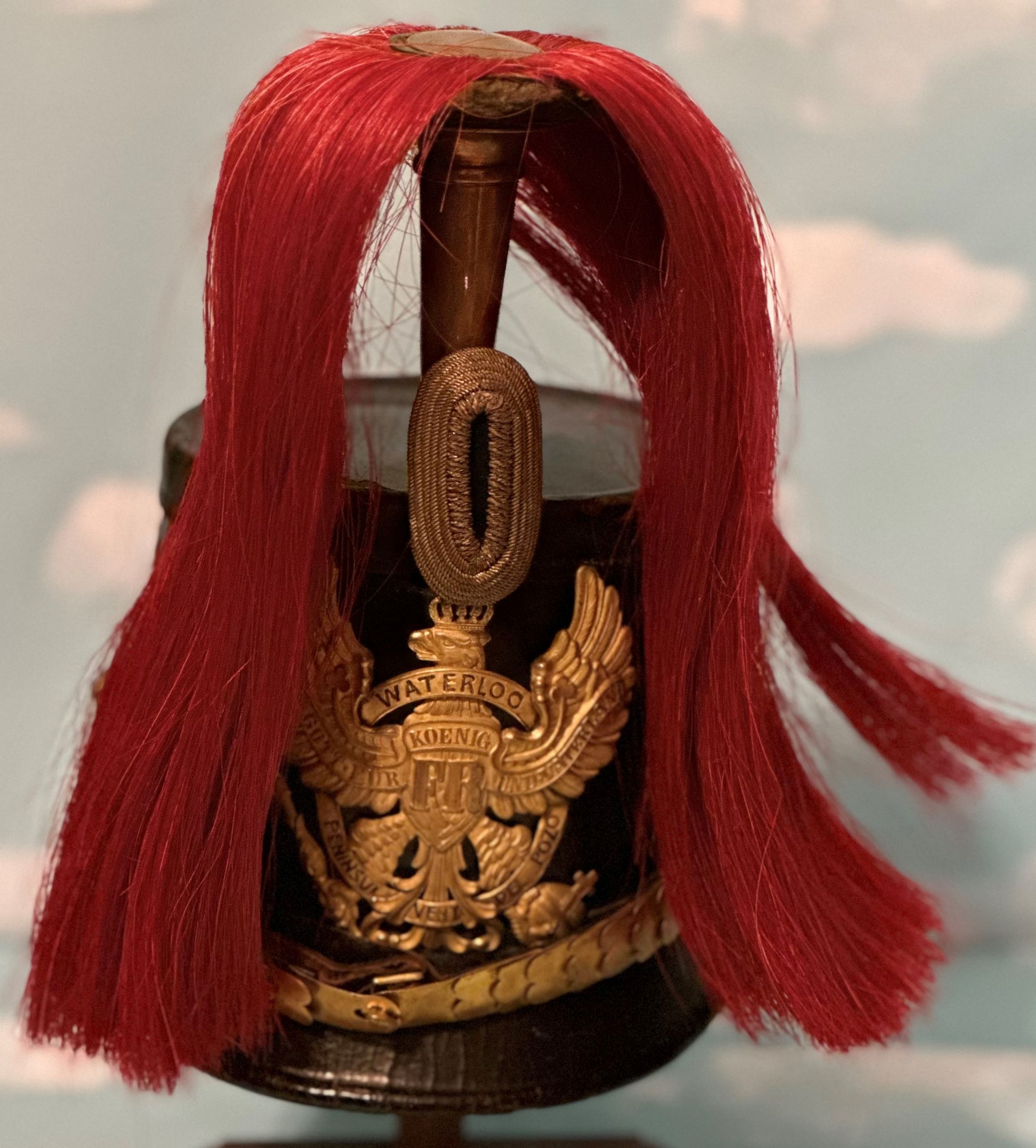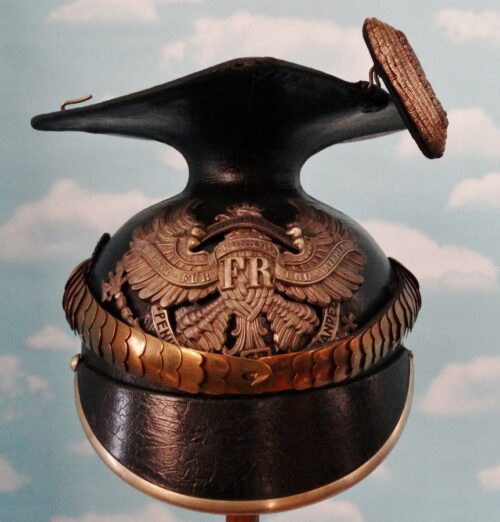Description
This is a rare and exceptional Hannoversches Jäger-Bataillon Nr 10 Senior NCO’s tschako, originating from a Hanoverian unit that was absorbed by Prussia in 1866. Formed in 1803, the Bataillon was stationed at Goslar and assigned to the X. Armeekorps. Historically, the Jäger-Bataillons were renowned for their marksmanship and were often tasked with disrupting the opposing army’s command structure. They were armed with early versions of rifles that boasted greater range and accuracy than the front-line infantry regiments’ muskets. Despite not being a Prussian unit during the Napoleonic Wars, the Kingdom of Hannover’s Jäger-Bataillon Nr 10 served in both the Peninsula Campaign and in the penultimate Battle of Waterloo in June 1815. After the Austro-Prussian War of 1866, Hannover’s territory and army were incorporated into Prussia, leaving Prussia as the dominant power under Wilhelm I and von Bismarck’s leadership. The tschako features a crowned eagle wappen encircled by the Peninsula and Waterloo bandeaux, gold-toned chin scales, and a single Reich’s kokarde on its right side.
The leather body of the tschako is in very fine condition, and the interior has a typical enlisted man’s liner with all the leather tongues and original leather sizing thong intact. The front of the tschako displays a correct Prussian. However, what makes this example particularly unique is the inclusion of a parade bush’s trichter slipped into the same slit as the Feldzeichen. The parade bush and gold trichter are in excellent condition, though a little curry combing would help make the bush fuller again.
Overall, this is one of the rarest Jäger Bataillon tschakos that could be offered, and it is in excellent condition.
The Prussian SEnior NCO Regimental Band Member for Jäger-Bataillon Nr 10 would have been a musician assigned to the battalion’s band. The band would have played a vital role in military parades, ceremonies, and events, providing morale and entertainment to soldiers and civilians alike.
In the case of Jäger-Bataillon Nr 10, their band would have likely played during their service in the Napoleonic Wars, including the Peninsula Campaign and the Battle of Waterloo. After the incorporation of Hannover’s territory and army into Prussia in 1866, the battalion became part of the Prussian army.
More information on the role of military bands in the Prussian army and the history of Jäger-Bataillons can be found at the following links:
- “The Prussian Military: A Social History” by Geoffrey Wawro (pages 152-153): https://books.google.com/books?id=VxMsmwEACAAJ&dq=The+Prussian+Military:+A+Social+History&hl=en&sa=X&ved=0ahUKEwiujJzQ3Z3vAhXSFjQIHeLXCsQQ6AEIKTAA
- “Military Music of the American Revolution” by Robert Garofalo (pages 124-126): https://books.google.com/books?id=UcJaAAAAQBAJ&dq=prussian+army+bands&source=gbs_navlinks_s
- “The Hanoverian Army of the Napoleonic Wars” by Peter Hofschröer (pages 18-19): https://books.google.com/books?id=6MAnf6Q2DbEC&dq=The+Hanoverian+Army+of+the+Napoleonic+Wars&source=gbs_navlinks_s
- “The Prussian Army, 1808-1815” by Peter Hofschroer (pages 40-41): https://books.google.com/books?id=1TqrBgAAQBAJ&dq=prussian+army+bands&source=gbs_navlinks_s

